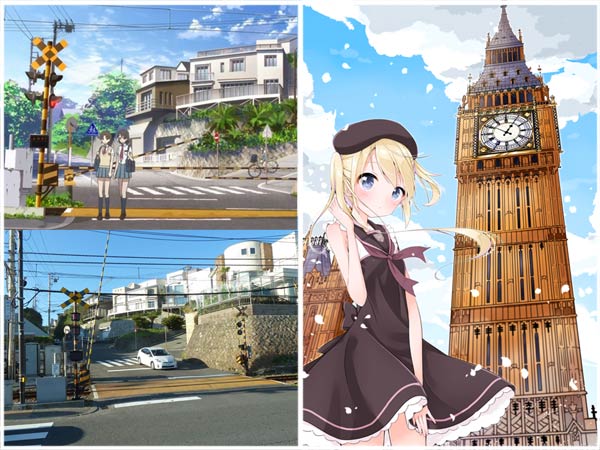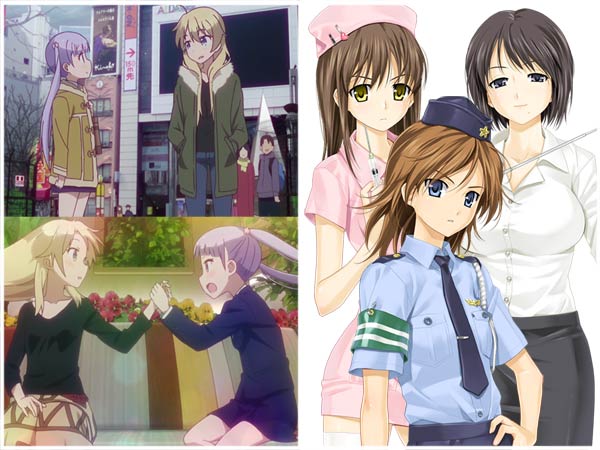There have been some major innovations in the anime industry over the years, including the first transforming mecha shows, the melding of singing idols with 2D anime, making the magical girl genre into a hybrid format that both boys and girls could enjoy and the rise of digital coloring, which is the reason the hand-painted animation cels you see for sale at conventions just keep getting older and older. Another major innovation was setting anime series in real places in Japan, a trend that started with Please Teacher! and Please Twins!, which were located in the pleasant Lake Kizaki region of Nagano Prefecture. This started the trend of fans seeking out their favorite real-life anime locations and visiting them, a practice that’s become known as 聖地巡礼 seichi junrei, or “making a pilgrimage to the Holy Land.” Japan is currently undergoing a huge boom in tourism, and the government is looking for ways to keep this positive energy flowing. One idea on the table is for the government to designate 88 “areas of pop cultural importance” such as Washinomiya Shrine, seen in Lucky Star, to promote more otaku tourism.
Japan is one of the most Westernized countries in Asia, having embarked on a policy of industrialization after Commodore Matthew Perry forced the country to open its doors to international trade in 1853. Over the next thirty years, the country did away with its old feudal system, ending the samurai class and opening its first Western-style factories. Japan was able to study different countries and choose the best institutions to import, basing its military on that of Prussia, for example, and reorganizing itself along the French prefectural system model. More often than not, Japan found itself borrowing ideas from Great Britain, the island nation they always felt most connected to. Japan’s government is based on the British Parliamentary model, and Japan’s post office and NHK broadcast network are perfect clones of the Royal Mail and the BBC. Japan drives on the left, just like the UK, and the Japanese word for a business suit is sebiro, which came from London’s Savile Row, where all the best bespoke suits are made. Perhaps the biggest love letter from Japan to “Great Britain-senpai” can be seen in any school anime. The chimes that play at the start of every class in Japanese schools aren’t just any chimes, but are on old Big Ben.
 Our new J-List Box monthly box sets are off to a big start. Have you ordered one? Every month we’ll offer awesome boxes filled with Japanese snacks (a basic and a deluxe set), plus awesome limited boxes with figures, plush toys and more, and of course something “naughty” for our adult customers every month. There are no subscriptions to join, just preorder the J-List Boxes you want now! Hurry, the current boxes ship out on October 10!
Our new J-List Box monthly box sets are off to a big start. Have you ordered one? Every month we’ll offer awesome boxes filled with Japanese snacks (a basic and a deluxe set), plus awesome limited boxes with figures, plush toys and more, and of course something “naughty” for our adult customers every month. There are no subscriptions to join, just preorder the J-List Boxes you want now! Hurry, the current boxes ship out on October 10!
















